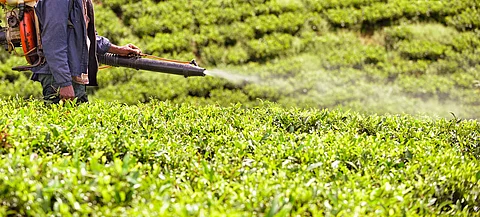

DDT or di-chloro-di-phenyl-tri-chloro-ethane, which was introduced as an insecticide in 1939, has had a troublesome relationship with agriculture ever since. Although it was found to be effective against a wide range of pests, it also degraded the soil and rendered it infertile after prolonged usage. In order to recover those infertile tracts, Swedish researchers have found that DDT-contaminated soils, when mixed with biochar, tend to regain fertility.
Researchers at Sweden’s Chalmers University of Technology, have developed a new method to manage ecological risks from the toxin by binding it with biochar.
When they mixed biochar into contaminated soil at a tree nursery, DDT uptake by earthworms in the soil was found to have been halved. This method can enable the cultivation of certain crops on land that is currently considered unusable due to the environmental risks.
“In our field experiment, we mixed the soil with biochar and grew different plants. We found that biochar binds DDT efficiently, so that it is not taken up by soil organisms,” Paul Drenning, postdoctoral researcher at the Department of Architecture and Civil Engineering at Chalmers, and the first author of the study was quoted in an official press statement.
The three-year study was conducted on a 23-hectare DDT-contaminated former tree nursery in southern Sweden.
The researchers dug out soil from a 50x5-metre section, divided the soil into piles and mixed biochar into half of them.
They then set up 24 experimental plots and distributed the soil randomly to the plots, half of which with biochar-amended soil. The plots were planted with four different plants: pumpkin, grasses, legumes and willows.
The researchers then used physical, chemical, and biological indicators to evaluate soil health and examine the effects of the plants and the biochar.
Meanwhile, the university statement also took note of excessive use of such insecticides in the past and how it continues to affect contemporary agriculture.
“The legacy of previous generations’ use of the insecticide DDT still affects us today. During the 50s and 60s, the substance was used to control pests in forestry and agriculture, and although it has been banned for over 50 years, in Sweden alone there are thousands of sites where the soil is still DDT-contaminated. Many other countries around the world have the same problem,” it noted.
Biochar — which is similar to charcoal in properties — is an environmentally friendly product that is economic to produce.
It binds contaminants and can improve soil health when added to soil. This practice can also be useful for climate change mitigation since it can contribute to long-term storage of carbon in the soil.
“Treating contaminated soil in large volumes is costly and complicated. A common solution is to dig out the soil and then transport it to a landfill for hazardous waste, but that means destroying good quality soils and is not a reasonable solution for large contaminated areas,” the lead author stated.
“Treatment with biochar on site could thus make the land useful instead of being left uncultivated or degraded, and also at a significantly lower cost for both the landowner and for the environment,” he added.
Examples of crops that could be grown in the treated area are saplings of pine and spruce, hay for animal feed or bioenergy crops such as willow trees (salix).
“The reason why the contaminated land is left unused today is not that there would be health risks with crops, but that the landowner is obliged by regulation to address the ecological risks with DDT. While awaiting an investigation and decision on this, the land has remained unused,” Jenny Norrman, Professor at the Department of Architecture and Civil Engineering and the leader of the research project, was quoted.